Papua and New Guinea Campaign 1942 Part Two
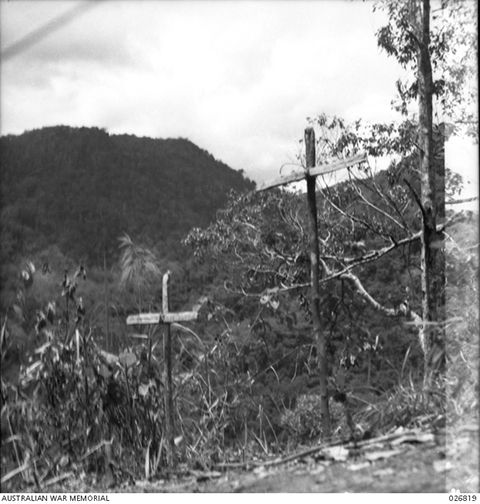
This year, as part of the AnArt4Life annual recognition of Remembrance Day on 11 November, Anne and Rowdy are presenting posts on the Papua and New Guinea Campaign of 1942. Yesterday we featured the Battle for Milne Bay and today we recognise and reflect on the Kokoda Campaign which commenced in late July 1942 - 80 years ago.
The Kokoda Track (or Trail) Campaign became a highly contentious issue which will not be discussed here except to say that the leadership of General MacArthur and General Blamey has been criticised for unreasonable and unrealistic perceptions of the terrain and conditions under which the campaign was fought—to the detriment of the troops committed to the fighting.1
Remembering that the troop numbers were largely, at first, made up of conscripts who had been trained in a few months in how to fight in a jungle - a token army of untrained troops to defend Australia:
And defend our country they did and covered themselves in glory.
Below you see a group of our wonderful boys with Curley their mascot who remarkably walked the track with the soldiers and made it to Oivi (PNG).
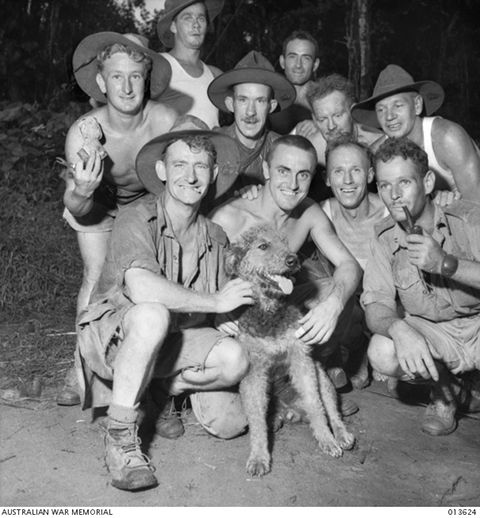
The Battle of Oivi–Gorari (4–11 November 1942) was the final major battle of the Kokoda Track campaign before the Battle of Buna–Gona. Following the capture of Kokoda by Australian forces on 2 November, the Allies began flying in fresh supplies of ammunition and food to ease the supply problems that had slowed their advance north after the climactic battle around Ioribaiwa, which coupled with reverses elsewhere, had stopped the Japanese advance on Port Moresby.1
On 4 November, the Australians resumed their advance, pushing towards Oivi along the Kokoda–Sanananda Track. Around the high ground at Oivi, the lead Australian element, the 16th Brigade, came up against well entrenched Japanese defenders from the South Seas Detachment who were intent on stalling the Australian advance towards the sea. Over the course of several days, determined resistance held off a number of frontal assaults, forcing the commander of the 7th Division, Major General George Vasey, to attempt a flanking move from the south. A second brigade, the 25th Brigade, subsequently bypassed Oivi via a parallel track before turning north and attacking the depth position around Gorari. Hand-to-hand fighting resulted in heavy casualties on both sides before the Japanese withdrew east and crossed the flood-swollen Kumusi River, where many drowned and a large quantity of artillery had to be abandoned.1
Experienced troops, like Rowdy's uncle Pte Maxwell Kenneth Wylie from the Middle East Campaign were eventually called back to Hold the Line in New Guinea and support the weary and less battle trained troops!!!
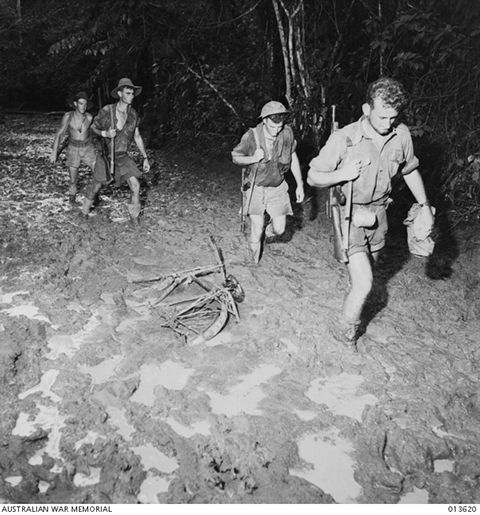
The Battle of Kokoda consisted of two engagements fought in late July to early August 1942. Forming part of the Kokoda Track campaign of the Second World War, the battle involved military forces from Australia, supported by the United States, fighting against Japanese troops from Major General Tomitaro Horii's South Seas Detachment who had landed around Buna and Gona in Papua mid-July 1942, with the intent of capturing Port Moresby to the south via the overland route.1
The first engagement took place on 28–29 July 1942, and saw a company-sized element of Australians attempt to hold the village from the advanced elements of the Japanese landing force, which were advancing towards the entrance to the Owen Stanleys. In a short firefight, the Australian company was almost encircled before withdrawing. The second engagement took place just over a week later between 8 and 10 August, during which a weakened Australian battalion launched an attack from Deniki, aimed at re-taking Kokoda. At the same time, the main Japanese force also launched an attack and the two sides clashed head on along the track. Meanwhile, flanking attacks caught the Japanese force, which had also grown to around battalion strength, by surprise, and the Australians briefly took Kokoda and nearby Pirivi before being forced to withdraw to Deniki, which was the scene of further fighting prior to the Battle of Isurava.1
As the Kokoda Track campaign continued, the Japanese pushed the Australians back towards Port Moresby, penetrating as far as Imita Ridge, until late September and early October, when the situation reversed and the Australians went on the offensive. As the Japanese withdrew north to assume defensive operations to consolidate their beachheads on the northern coast, the Australians subsequently re-took Kokoda in early November 1942. 1
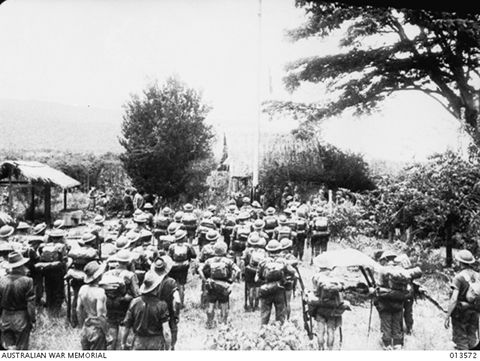
There is a very special "thank you" that must be said as we remember those who gave so much to save Australia and the surrounding islands from the invading force.
This salute and thank you goes to the people of Papua and New Guinea who fought with, and cared for, the troops of the allied forces fighting on their soil.
The PNG men who risked and gave their lives to rescue injured soldiers and airmen were affectionately called the Fuzzy Wuzzy Angels. As one Australian digger noted:
They carried stretchers over seemingly impassable barriers, with the patient reasonably comfortable. The care they give to the patient is magnificent. If night finds the stretcher still on the track, they will find a level spot and build a shelter over the patient. They will make him as comfortable as possible fetch him water and feed him if food is available, regardless of their own needs. They sleep four each side of the stretcher and if the patient moves or requires any attention during the night, this is given instantly. These were the deeds of the "Fuzzy Wuzzy Angels" – for us! 1
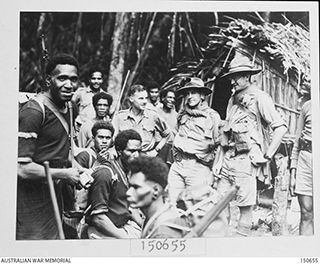
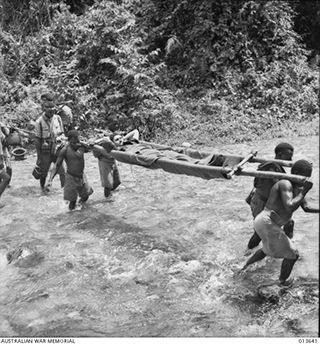
Anne's Dad was one of the officers in charge of getting the supplies up the track as it was then called. He became ill along the way and was cared for by the local villages and escorted back to camp by two Fuzzy Wuzzy Angels who no doubt helped to save his life.
Often when we think of war we concentrate on the fighting that takes place, forgetting that the troops did, and still do, spend much of their time in preparing the way forward in order to win the fight.
Below we see some troops and local people from PNG building a bridge across a raging jungle river so that troops can quickly pass over and on to battle the enemy.
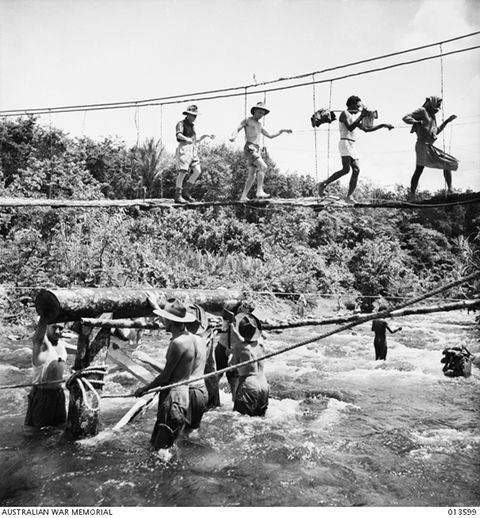
And as recognised in yesterday's post, there would be no record of these significant historical affairs without the war artists, photographers and journalists who risked their lives to record first hand the events as they were unfolding.
On the left below is Geoff Reading (1912-nk) who was one of the war jounalists who wrote a book about his experiences covering the PNG campaign titled Papuan Story (Angus and Robertson, Sydney, 1946). Anne grew up calling the path that winds up through the jungle covered mountains of PNG - the Kokoda Track. Later it became known as the Kokoda Trail and it was Geoff Reading who claimed responsibility for calling the Kokoda Track - the Kokoda Trail.2
Also below (on the right) is Australia's most famous and best known war photographer and film maker Damien Peter Parer 1912-1944 who tragically was killed by Japanese machine-gun fire at Peleliu, Palau on 17 September 1944.1
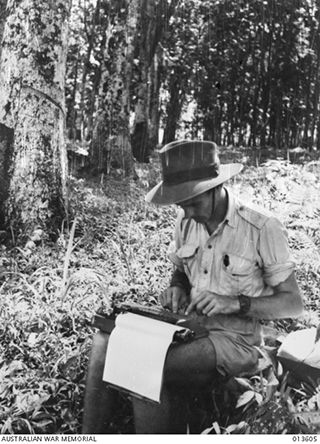
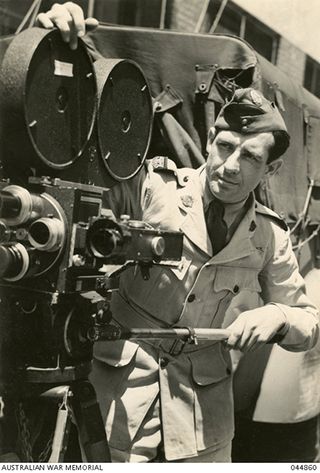
If you would like to read more about the life and work of Damien Peter Parer please click here.
We thank with all our hearts those brave men and women who have risked and given their lives so that we might live free from fear and oppression and where our dreams can become a reality.
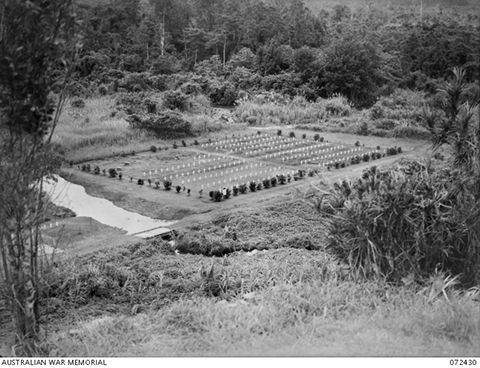
Below for you to watch is the Academy Award newsreel (9mins) from 1943 depicting the fighting in New Guinea.
Kokoda Front Line! was a full-length edition of the Australian newsreel, Cinesound Review, produced by the Australian News & Information Bureau and Cinesound Productions Limited in 1942, about the Kokoda Track campaign. It was one of four winners of the 15th Academy Awards for best documentary, and the first Australian film to win an Oscar. It was filmed by the Australian war photographer Damien Parer (1912-1944) and directed by Ken G. Hall.3
Damien Parer is often cited as one of Australia's early Academy Award winners, however the award was made to the director, Ken G. Hall.3
Much of Parer's footage was used in a documentary made by a rival company, Movietone, The Road to Kokoda.3
And if you have time you might like to watch a full length feature on The Kokoda Track Campaign: July-November 1943 (1hr 30mins).
For those who prefer to listen to the radio here is a short 8 minute report from the ABC broadcast back in 2017 on the 75th anniversary of the Battle of Milne Bay: a turning point in WWII.
Tomorrow in Remembrance of 11 November John Rowdy Wylie will present for you his painting which he has dedicated to the men who fought in the Papua and New Guinea Campaign of 1942-1945.
Credits
1. en.wikipedia.org
2. openresearch-repository.anu.edu.au
3. youtube.com

